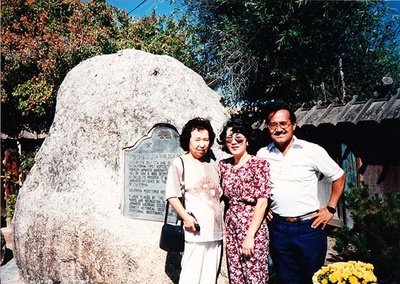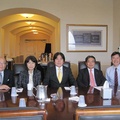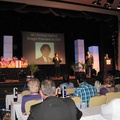The year is 1868. The Boshin War began with the Battle of Toba-Fushimi, and in August the Satsuma-Choshu forces invaded Aizu, starting the Aizu War. The Byakkotai committed suicide on Mt. Iimori, and Tsuruga Castle fell. The defeat in this war, Aizu's greatest tragedy, left deep scars on the society, culture, and history of Aizu.
At this time, there were people who sought new horizons overseas after the defeat. They were the people of Aizu who had been recruited by Henry Schnell, a Prussian arms dealer who traded with the Aizu clan. In the spring of 1869 (Meiji 2), the group set off for America from Yokohama Port on a steamship. This was the "Wakamatsu Colony," the first group of Japanese agricultural immigrants to North America. Among them were Schnell's Japanese wife Oyo and daughter Okei, a 17-year-old nanny.
Eventually, the Schnell family mysteriously disappeared, and she became a nanny for the Bierkamp family, but she died there at the age of 19. Her gravestone was erected facing Japan. 15 years ago, I visited her grave at the arrangement of Shinkichi Koyama, then president of the Fukushima Prefectural Association. The area around her gravestone was called Gold Hill, and gold was found there. At the time, gold was mined all over California. That is why California is still called the Golden State today.
Hiroko Aihara, a member of the Fukushima Minpo Newspaper Company's press department, ran a serial article about Okei in the newspaper in a special feature titled "Beyond the Waves - The Path of California Immigrants" to commemorate the 100th anniversary of the Southern California Fukushima Prefectural Association. Okei has been a popular subject for many years, perhaps as one of the sad stories of Japanese immigrants to America.
When Miyuki Kawanaka toured the US in 2009, Osamu Yoshioka wrote the lyrics for "Okei" for the Japanese people of Los Angeles, Tetsuya Gen composed the music, and Miyuki Kawanaka sang it, moving the audience. The lyrics tell us everything about Okei at that time.
Even if we are wounded and defeated in the war, our souls are not tainted. We cross the straits and build a Utopia in Aizu in America. The pioneers sow the seeds of their dreams. Okemo is also a small pioneer. A pioneer who sleeps and sits on the floor.
The wilderness is far from what I had imagined. It bounces back at the hoe. Those who cannot survive the day leave the mountain. Those who leave the mountain are scattered. The heart of the people is scattered. The pioneers do not cry. The pioneers who sleep and look after the babysitter.
Can you see it? Can you hear the voice of the motherland from the gravestones of Gold Hill, Tsuruga Castle? At least put on some crimson red in the sky. On your lips, in the maiden's heart, Okei is 19 years old. Sleeping babysitter, pioneer.
Nenne Babysitter Pioneer
After reading this story, Hateruma Shino (24), a master's student majoring in international relations at the Waseda University Graduate School of Asia-Pacific Studies, wrote the following comment: "No matter where you go, you'll find yourself in a hopeless environment, and crying won't solve anything. So you just stay in that place in silence, grit your teeth, and live your life to the fullest. I think that this is what led to Okei's death at the young age of 19... To me, this image overlaps with Okei's life and Okinawa. Okinawa, which sought reversion from the American world to an "ideal" Japan with a peace constitution, has long suffered from discriminatory treatment by the Japanese government even after reversion. On this small island where you will not be rewarded no matter where you belong, the people try to do everything they can to the best of their ability. I want to be one of them. I don't want to give up on the hopes of the Uchinanchu. I don't want Okinawa to end up short-lived. I am trying to conduct research with that kind of inner energy."
Hateruma's desire to become a spiritual pillar for Okinawa, and her portrayal of the life of the unfortunate young girl Okei, overlap with the Okinawan people who have lived strong lives despite being tossed about by history, will surely be a source of encouragement for the people of Okinawa.

Niiza Riharu, professor in the Faculty of Psychology and trustee and vice president of the University of the Ryukyus, wrote in his review, "Okinawans are still oppressed today, but they are gradually becoming more self-assertive. The 'Edo Tachi' expedition, one of the events commemorating the 60th anniversary of the University of the Ryukyus, traveled from March 1st to 12th, following the route from Naha to Edo that people of that time took, reliving history and experiencing a modern view of history. They discovered a proactive view of Edo Tachi, rather than one of Okinawa's subordination. I'm sure Hateruma Akira is conducting this kind of research as well. It's a wonderful essay."
*This column is based on the essay "Okei" published in the Ryukyu Shimpo on March 22, 2010, and Okinawa, with additions and some revisions, and the addition of photographs.
© 2010 Sadao Tome












